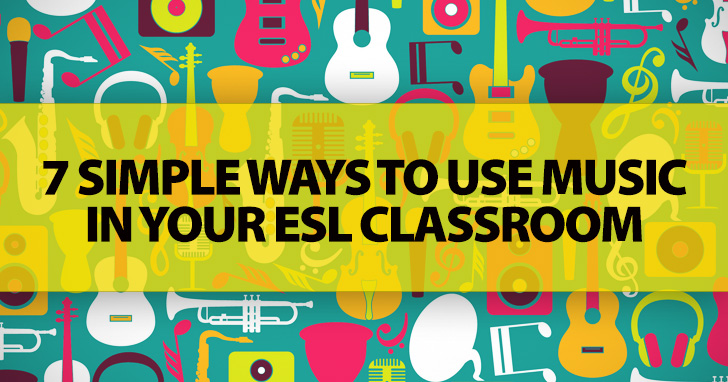Time to Tune In: 7 Simple Ways to Use Music in Your ESL Classroom


Music gets into the heart and mind and does amazing things there. Whether it is country or heavy metal, smooth jazz or rap, music affects people, which is what makes it such a great tool for the ESL classroom. Kids especially enjoy learning though song and are willing to sing their little lungs out without the self-consciousness that creeps in during the teenage years. If you are already using music in class or if you are just thinking about starting, here are eight must-know tips for using music with young learners.
I don’t have to tell you that not every aspect of the English language is easy to learn. For some students the tough stuff might be pronunciation. For others it may be grammar rules. For another student, something else. When you find yourself with a tough topic to teach, whatever it is, turn to music. Kids learn and memorize better when information is set to music (as do adults). If you find your students struggling with a concept or content, give it to them in song. You might find the grammar rock videos on YouTube a great resource, or write your own English songs (more about that next). Your students will be able to remember more and more easily when the information is set to do ray, mi.
It may sound intimidating, but writing your own song is really quite easy. You’ve probably already done it without even realizing it was happening. Start with a melody you (and possibly your students) already know – Twinkle Twinkle Little Star, Mary had a Little Lamb, Yankee Doodle, etc. Then think about what content you want to teach. As you are humming the melody to yourself, see where your content fits in. In other words, plug in your own words for the ones in the original song. That’s it. The words don’t have to be great or even rhyme. As long as you communicate the necessary information in the syllables allowed, you wrote a pretty effective song. Then sing it for your class. If they know the tune, they should pick up on the new words in a snap. If the melody is new to them, don’t panic. Give them a few listens and they’ll be singing along with you before you know it.
Don’t stop with writing your own music. Let your students write their own songs, too. The same rules apply. Have them start with a melody they know and put their own words in place of the originals. They will choose tunes they and their classmates like and are familiar with. As they write the words to the songs, they will get more hands on with the information you are teaching, and they will learn it as a result. Kids learn better when they experience information though their senses. Having student write their own songs using the information you present in class will get them fully engaged with what they are learning.
Are you doing a unit on parts of the body? Sing Head, Shoulders, Knees and Toes in class. Are you teaching holiday vocabulary? Share Dreidel Dreidel or Jingle Bells with your students. Whatever song you decide to use in class, your students will learn at least one thing from it. Vocabulary. Songs are great for teaching new words to your students in meaningful contexts. Try giving your students the lyrics to a song before you teach them how to sing it and highlight any important words. Then see if they can guess the meaning of those words based on their context in the song. Finally, give them the meaning or have students look the words up in a dictionary before you sing the song or play it for them.
As great as music is, it can’t be your only method of instruction. Work songs into your lesson plans as another means of presenting the information you want your students to learn. They should not be the only way you teach, nor should any other one method. Keep your lessons varied by using different instruction methods and tasks and keep them unified by presenting and using the same information in multiple ways.
Not every teacher uses music in class, but they should. Learning through music is a proven learning style. Some students learn best when the information is presented through song. Don’t leave these students in the dust, and don’t feel like you are wasting valuable class time by singing. Teaching through music is a legitimate style of instruction and should be valued as such.
Don’t go into class planning on playing a song for your students without making sure everything is in working order before they get there. Check your sound equipment before class. If you are singing the songs for your students, you may not have anything to check, but if you are playing a song or watching a video, don’t skip this step. Check your sound and video equipment before class. There is nothing more frustrating than losing time and energy to fix a technical problem that should have been taken care of before the class clock started ticking down.
If you play an instrument, bring it in. Your students will love seeing you play guitar, keyboard, or whatever instrument you play. You don’t have to be stellar at it either; your students will love you and your efforts to share part of yourself with them in class. Plus class will be even more memorable when you put yourself out there in a more personal way.